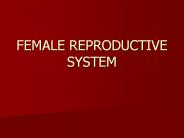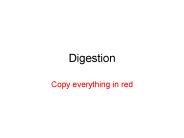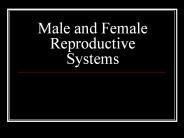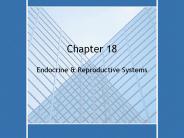Fingerlike PowerPoint PPT Presentations
All Time
Recommended
These fingerlike projections are. typical of cells that absorb. nutrients in the intestines. ... sea anemone with its fingerlike projections in constant motion, ...
| PowerPoint PPT presentation | free to view
Contains dermal papillae (small,fingerlike projections that indent the epidermis ... Contains papilla of hair (areolar connective tissue and blood vessels to nourish ...
| PowerPoint PPT presentation | free to view
My animal has large ears , and a long trunk as a nose which has two fingerlike ... My animal's habitat is a very grassy place because African Elephants like grass. ...
| PowerPoint PPT presentation | free to view
Here are villi - fingerlike projections covered with microvilli. ... Fats - go from villi to lymph vessels to cells ... Villi and Microvilli in the Small ...
| PowerPoint PPT presentation | free to view
Introduction The digestive system is used for breaking down food into nutrients which then pass into the circulatory system and are taken to where they are needed in ...
| PowerPoint PPT presentation | free to download
Digestion is the changing of food into a usable form. ... animals only have 1 opening in the digestive system (hydra, jellyfish, planarian) ...
| PowerPoint PPT presentation | free to view
Digestive System Digestion the process where food is broken into simple forms the cells can use. 2 Main Functions of Digestion Break down food Absorb food Alexis St ...
| PowerPoint PPT presentation | free to download
Charles Alexander Jencks (1939 - 2019) was an American cultural theorist, landscape designer, architectural historian, and co-founder of the Maggie’s Cancer Care Centres. He published over thirty books and became famous in the 1980s as theorist of Postmodernism. Jencks devoted time to landform architecture, especially in Scotland. The Garden of Cosmic Speculation was created by Charles Jencks at his home, Portrack House, near Dumfries.
| PowerPoint PPT presentation | free to view
Digestive System 3 Functions Digestion- Breaks down food into simpler substances (Nutrients) Absorption- Nutrients are absorbed into the blood and carried ...
| PowerPoint PPT presentation | free to view
Digestive System - breaks down food into molecules the body can use, getting rid of undigested molecules http://health.howstuffworks.com/adam-200086.htm
| PowerPoint PPT presentation | free to download
Chyme is food mixed with stomach chemicals, expelled by the stomach into the duodenum. ... It is divided into three parts: Duodenum, the Jejunum, and the ileum. ...
| PowerPoint PPT presentation | free to view
Fingers are Longer than Thumbs. Just because... What is a protein that speeds up a chemical reaction called? Enzyme. Saliva. Mad Cow Disease ...
| PowerPoint PPT presentation | free to view
Caudal Fin. Gill Covers (operculum) Lateral line - sensory organ of fish. Remove several scales ... With a scalpel, remove a section of the lateral line. What ...
| PowerPoint PPT presentation | free to view
Return What is mechanical digestion? Physical breakdown of food, as in chewing Return The breakdown of large molecules of food for absorption What is chemical digestion?
| PowerPoint PPT presentation | free to view
Introduction The digestive system is used for breaking down food into nutrients which then pass into the circulatory system and are taken to where they are needed in ...
| PowerPoint PPT presentation | free to view
The Digestive System Purpose of digestive system: Converts food into small molecules that can be used by cells!! Why do the food molecules need to be small??
| PowerPoint PPT presentation | free to view
Marsupialia, Lagomorpha, and Insectivora Marie Rhodes Marsupials Typically has a pouch Differs from placental mammals in reproductive traits Embryo is born at early ...
| PowerPoint PPT presentation | free to view
FEMALE REPRODUCTIVE SYSTEM INTERNAL STRUCTURES OVARIES- (2)- are the primary reproductive organ of the female Function- Produce ESTROGEN and PROGESTERONE Produce ...
| PowerPoint PPT presentation | free to download
Equine Science Digestive Physiology The Digestive Tract Horses are non-ruminant herbivores simple stomach animal Utilize 1 stomach Able to utilize large amounts ...
| PowerPoint PPT presentation | free to view
Example of Simple Cuboidal Epithelium Sectional view of ... Presentation The Tissue Level of Organization The Origin of Tissues 4 Basic Tissues Types ...
| PowerPoint PPT presentation | free to view
The Tissue Level of Organization Group of similar cells common embryonic origin common function bound together by intercellular substance Histology study of tissues ...
| PowerPoint PPT presentation | free to view
small pouch that extends off of the large intestine. fights infections and maybe 'reseed!' larger when a child - they are more vulnerable to infections. Liver ...
| PowerPoint PPT presentation | free to view
The human oviduct, also known as the fallopian tube, is an essential component of the normal reproductive process
| PowerPoint PPT presentation | free to download
Body System Jeopardy! By Emma and Addie Productions. Respiratory Circulatory Urinary Digestive Nervous 100 100 100 100 100 200 200 200 200 200 300 300 300 300 300
| PowerPoint PPT presentation | free to view
Digestive System Chapter 23
| PowerPoint PPT presentation | free to view
A. Reticulum Tough, honeycomb like structure, puncture resistant, lower portion of the Catches foreign objects and prevents them from causing further harm ...
| PowerPoint PPT presentation | free to download
UTERUS Characteristics- Located in the ... Tahoma Arial Wingdings Calibri Slit 1_Slit FEMALE REPRODUCTIVE SYSTEM INTERNAL STRUCTURES OVARIES ANATOMY OF ...
| PowerPoint PPT presentation | free to download
FROG DISSECTION EXTERNAL AND INTERNAL ANATOMY EXTERNAL ANATOMY Notice how thin the Skin is. Locate the external Nares or nostrils Locate the Eyes and find the ...
| PowerPoint PPT presentation | free to view
Fungi Characteristics Multicellular (few exceptions like yeast) Eukaryotic Heterotrophic, break down food then absorb, saprotrophic Some are parasitic, cause disease ...
| PowerPoint PPT presentation | free to download
Gastrointestinal Syndrome Acute Radiation Syndrome: 100 rads or more of exposure required Full body exposure of radiation must come from an outside source Radiation ...
| PowerPoint PPT presentation | free to download
And the digestive system will be busy at work on your chewed-up lunch for the ... The glands make gastric juice which has special proteins and acids that break ...
| PowerPoint PPT presentation | free to view
Title: PowerPoint Presentation Author: Lanesville Community Schools Last modified by: Staff Created Date: 5/2/2006 3:09:56 PM Document presentation format
| PowerPoint PPT presentation | free to download
skin & appendages prof. dr. fauziah othman dept of human anatomy
| PowerPoint PPT presentation | free to download
Chapter 39 Digestive and Excretory Systems FOOD PYRAMID Fats, oils, and sweets (top of the pyramid) Use sparingly Milk, Yogurt, Cheese 2-3 servings a day Meat, Beans ...
| PowerPoint PPT presentation | free to download
Have an inherent polarity (plus and minus end) Thinner, more flexible, shorter than MTs ... Contractile Bundles. Contractile Ring during cytokinesis. Microvilli ...
| PowerPoint PPT presentation | free to view
Steps to write a pediatric echocardiography report with introduction to segmental approach for evaluation of congenital heartdisease
| PowerPoint PPT presentation | free to download
The Digestive System It s a Wild Ride! The Functions of the Digestive System 1. Ingests food! (Duh!) 2. Digests food while it is being forced ...
| PowerPoint PPT presentation | free to view
Vocabulary Review The Digestive System The Excretory System * * * * * * * * * * * * * * * * * * * * * * * * * * * * * * * * * * * * * Break down food using enzymes ...
| PowerPoint PPT presentation | free to view
The female reproductive system matures at puberty and enables women to reproduce. Female Reproductive Organs Female Reproductive Organs The female reproductive system ...
| PowerPoint PPT presentation | free to download
Tay-Sachs Disease. By Jill Meltzer. Tay-Sachs Disease (TSD) ... The couple also had another daughter, Kelly, who did not have Tay-Sachs. ...
| PowerPoint PPT presentation | free to view
Cells 1 Keratinizing epithelial cells 2 Wet stratified barrier epithelial cells 3 Exocrine secretory epithelial cells 4 Hormone secreting cells
| PowerPoint PPT presentation | free to view
Digestion Copy everything in red The Digestive System s Function As food passes through the digestive system, it gets broken down distributing its nutrient value to ...
| PowerPoint PPT presentation | free to download
Exocrine glands. Endocrine glands. Glands in Detail. The products of exocrine glands are secreted into ducts that lead directly or ...
| PowerPoint PPT presentation | free to view
Chapter 12 - 2 Female Reproductive system OVARY The ovaries are the _____ of the female. 2 almond-shaped glands just caudal to each kidney (L. ovary is the _____).
| PowerPoint PPT presentation | free to download
Male and Female Reproductive Systems Male Reproductive System It includes both internal and external organs Two main functions: Production and storage of sperm ...
| PowerPoint PPT presentation | free to download
Nutrition & Digestive System Homeostasis Process by which organisms maintain a relatively stable internal environment.
| PowerPoint PPT presentation | free to download
Chapter 18 Endocrine & Reproductive Systems
| PowerPoint PPT presentation | free to download
Digestive System Overview. Pancreas. Coolest Digestive System WebQuest Ever! By: Mr. Nilsen ... This WebQuest will take you on a journey through the digestive system. ...
| PowerPoint PPT presentation | free to view
Ch 21 Digestion and Nutrition Diet must supply essential nutrients Essential nutrients: must be obtained in preassembled form b/c cannot make minerals Malnourishment ...
| PowerPoint PPT presentation | free to download
small pouch that extends off of the large intestine. fights infections and maybe 'reseed!' larger when a child - they are more vulnerable to ... villus ...
| PowerPoint PPT presentation | free to view
Cell structure, genetic control, and life cycle Movement of molecules into cells Through membrane Phagocytosis Endocytosis/pinocytosis Exocytosis/secretion Receptor ...
| PowerPoint PPT presentation | free to download
Three Basic Shapes. Squamous like scales, or pancakes ('being squashed like a pancake' ... Cutaneous body surface; protection (skin) ...
| PowerPoint PPT presentation | free to view
... breaking starches (polysaccharides) into disaccharides using the enzyme amylase ... uses pancreatic amylase to turn starch into disaccharides ...
| PowerPoint PPT presentation | free to view
2 and 3 Which of the listed organelles is non-membranous and correctly paired with its function? 1. ... Active transport/it is dependent on a concentration gradient 2.
| PowerPoint PPT presentation | free to download
FITA First use of bow-sights Aluminium arrow shafts first used Plastifletch vanes replaced feathers Recurve bows were made First
| PowerPoint PPT presentation | free to view
























































